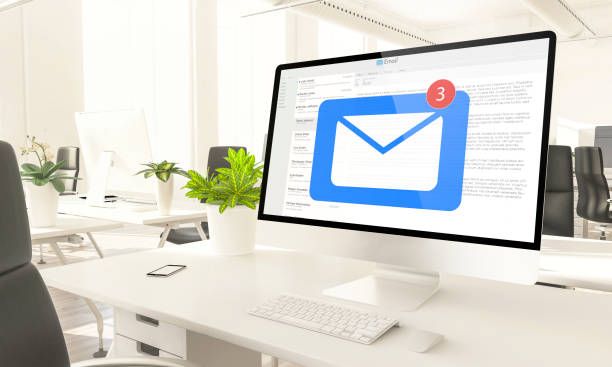In the digital age, email marketing remains a powerful tool for businesses to connect with their audience, build relationships, and drive conversions. However, the success of your email marketing campaigns relies heavily on email deliverability and engagement. To ensure your emails reach the intended recipients and generate desired outcomes, it is crucial to leverage email checker tools. In this expert guide, we will explore the world of email checker tools, their significance in optimizing email deliverability and engagement, and provide actionable tips to make the most of these tools for your email marketing success.
Why Email Checker Tools Matter for Your Email Marketing

- Reducing Bounce Rates: Email checker tools help identify invalid, inactive, or misspelled email addresses that can cause email bounces. By removing such addresses from your mailing list, you can significantly reduce bounce rates and improve the overall deliverability of your emails.
- Maintaining Sender Reputation: Email checker tools allow you to identify potential spam traps, role-based email addresses, and suspicious domains. By proactively removing these risky elements from your email list, you can maintain a positive sender reputation and avoid being flagged as spam.
- Improving Engagement Metrics: Sending emails to a verified and engaged audience increases the likelihood of higher open rates, click-through rates, and conversions. Email checker tools ensure that your messages reach active and interested recipients, thereby boosting engagement metrics and maximizing the impact of your campaigns.
- Cost Optimization: By eliminating invalid or inactive email addresses, email checker tools help optimize your email marketing costs. You can focus your efforts and resources on reaching a more engaged and responsive audience, maximizing the return on your investment.

How to Choose the Right Email Checker Tool
Consider the following factors when selecting an email checker tool:
- Accuracy and Reliability: Choose a tool that has a proven track record of accuracy and reliability in verifying email addresses. Look for providers that use sophisticated algorithms and regularly update their databases to deliver reliable results.
- Data Security and Privacy: Prioritize tools that employ robust security measures to protect your data during the verification process. Ensure the tool complies with privacy regulations and does not store or misuse your email addresses.
- Integration Capabilities: Opt for a tool that seamlessly integrates with your existing email marketing platform or CRM system. This allows for efficient management and synchronization of your email lists, ensuring accurate and real-time verification.
- Additional Features: Consider the additional features offered by the email checker tool, such as bulk verification, API access, and detailed reporting. These features can enhance the efficiency and effectiveness of your email marketing efforts.

Using Email Checker Tools: Best Practices and Strategies

Follow these best practices to make the most of email checker tools for your email marketing campaigns:
- Regularly Cleanse Your Email Lists: Perform regular email list hygiene by running your email lists through the checker tool. Remove invalid, inactive, and high-risk email addresses to maintain a healthy and engaged subscriber base.
- Validate New Subscribers: Verify the email addresses of new subscribers before adding them to your mailing list. This ensures that only valid and engaged users receive your emails, reducing the chances of spam complaints and bounces.
- Segment Your Email List: Utilize the insights gained from email checker tools to segment your email list based on engagement levels and deliverability status. Tailor your email content and frequency according to each segment, optimizing engagement and deliverability.
- Monitor Email Deliverability Metrics: Keep a close eye on your email deliverability metrics, such as bounce rates, open rates, and spam complaints. Track the impact of your email checker tool usage and make necessary adjustments to continually improve your email performance.
FAQs about Email Checker Tools
Q1. How accurate are email checker tools?
Email checker tools vary in accuracy, but reputable providers strive to achieve high accuracy rates. However, it's important to note that no tool can guarantee 100% accuracy due to the dynamic nature of email addresses.
Q2. Can email checker tools identify spam traps?
Yes, some advanced email checker tools can identify potential spam traps based on their extensive databases and algorithms. By removing spam traps from your email list, you can mitigate the risk of being marked as a spammer.
Q3. Do email checker tools verify email addresses in real-time?
Some email checker tools offer real-time verification through API integration, allowing you to validate email addresses at the point of entry. This ensures that only valid email addresses are added to your database.
Q4. Can email checker tools handle bulk verification?
Yes, many email checker tools offer bulk verification options, allowing you to verify a large number of email addresses at once. This is particularly useful when cleansing your existing email lists or validating new subscribers in bulk.
Q5. Are email checker tools suitable for all types of businesses?
Yes, email checker tools are beneficial for businesses of all sizes and industries that rely on email marketing. Whether you run a small e-commerce store or a multinational corporation, these tools can help improve your email deliverability and engagement.
Conclusion
Email checker tools play a vital role in optimizing email deliverability and engagement. By leveraging these tools, you can reduce bounce rates, maintain a positive sender reputation, and improve the effectiveness of your email marketing campaigns. Choose a reliable and accurate email checker tool, integrate it into your email marketing workflow, and follow best practices to maximize the impact of your email communications. Stay ahead of the competition, enhance customer relationships, and drive business growth through the power of email checker tools.

